I came across a stumpwork portrait tutorial by Queenie’s Needlework some time ago and finally had the gumption to give it a try. One of the last steps Queenie offers is to give the portrait a name. This lady doesn’t look very much like anyone I know, but for some reason I felt my great gramma Irma was in there somehow.
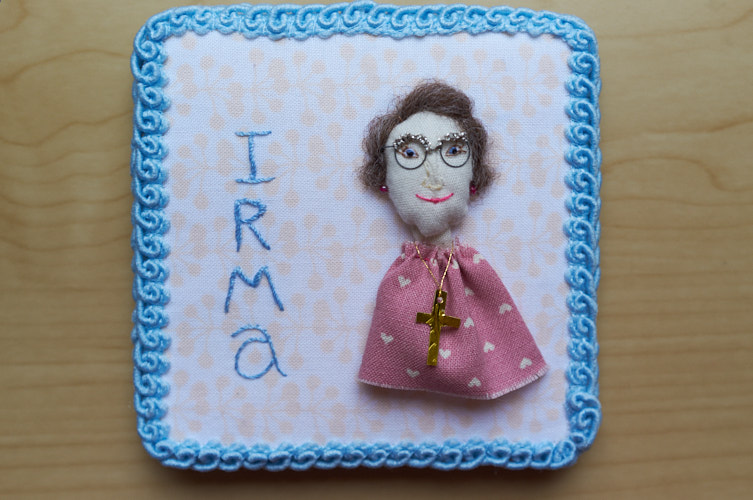
She lived to be 93, having passed away from “old age” in 2005. My great gramma always represented a strong female to me, having raised 11 children after my great-grampa died in 1954 (for perspective, she had 31 grandchildren and I was one of 40 great grandchildren – and she already had 9 great-grandchildren!). She lived on the same family farmstead that they got when married, in the same slate-roofed house (which is on the state’s registered architectural Landmarks list). Since my gramma lived on the farm plot just next door, I saw my great gramma often when I was little – especially because a few of her grandchildren, which she babysat, were near my age. And since she was the matriarch of the family, every Christmas saw all her descendants gather at a rented hall to celebrate, so I had much closer connections to “distant” relatives than probably any of my friends.
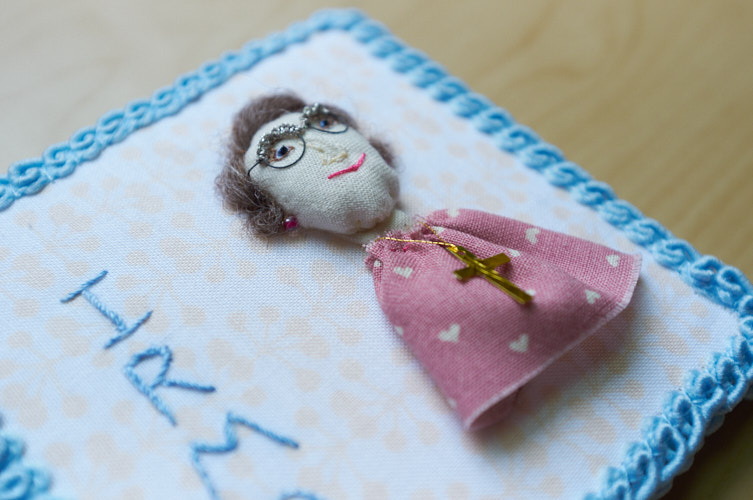
She was an avid hand-quilter and I have inherited an 8-point star quilt she always kept on the bed. If she wasn’t quilting, she was cooking. Every Christmas she gave us a bag of fresh baked cookies – so many kinds! Monster cookies, sugar cookies, and butterscotch chip cookies were my favorites. And any time I stopped over, there was a giant pot of soup boiling and never a short supply of goldfish snacks. Her third passion was her religion, which is why I added a cross necklace.
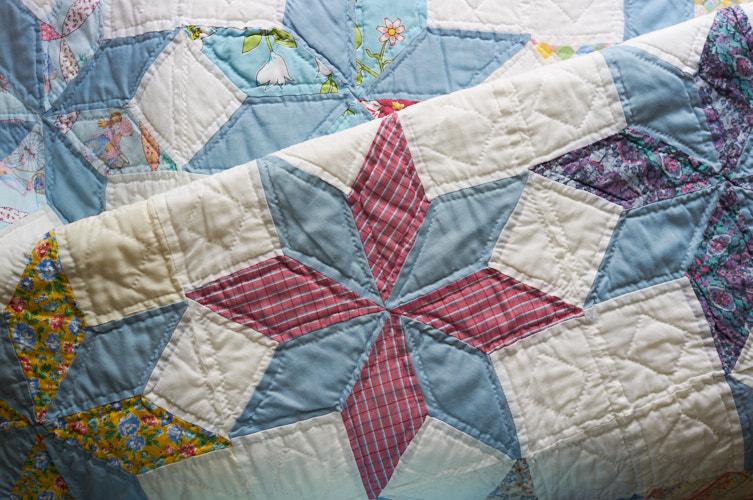
In grade school, I had had an “interview” assignment where I was to come up with a lot of questions about something in history and ask an older person for the answers. I chose great gramma, of course, and asked her about life in the 20s. She giggled when I asked if she was a flapper, acting like it was such a nonsense question. Now, older and wiser, I understand why she found that so funny;) She never learned to drive (since she didn’t need to with all the children to help), and never remarried (because she still was married in her heart). My great gramma also kept a turtle in the basement, but I rarely had the pleasure of seeing it as it was very good at hiding. And she was creative; aside from making patchwork quilts, she taught me to make ornaments out of pasta or how to play Jacob’s Ladder with a string, and often wrote poems. I also have a jar of heads she made – adorable pantyhose doll heads! And she told me how she use to carve apples into heads and let them dry.
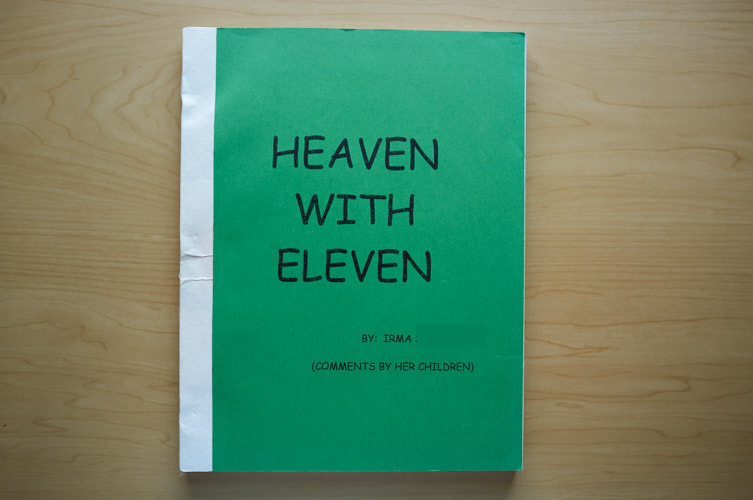
I don’t doubt that the relationship I had with my great gramma is part of why I am interested in history as an archaeologist. Through her, and that long-ago assignment, I felt connected to a past at a young age rather than the past being some boring concept written about in books that had nothing to do with me. One of my prized possessions is a book she wrote with her children, titled “Heaven with Eleven”, where she recalled many events in her life, old wive’s tales, and commentary on the old times – lots of photos were included and she wrote a little bit about each of her children, too. I never met my great-grampa so I was intrigued to learn about what kind of man he was, also. I had her sign it for me, which she thought was silly, but I don’t think she realized how important her history was to me.
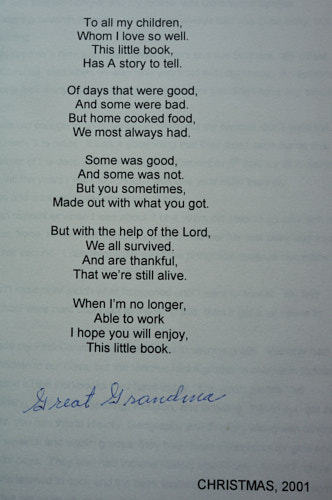
As far as construction goes, I followed Queenie’s super easy tutorial and thought about some things I picked up from Salley Mavor, like using wire for glasses. I stripped the green paper off of some floral wire, found an appropriately sized knitting needle to wrap it around for the lenses, slipped the wire through the ground fabric, then buttonhole stitched the top of the frame carefully (the glasses are only connected at the nose piece and “behind the ears”). Beads became earrings. Felting wood became hair. Krenik thread is the necklace chain, and a cut gold leaf sequin became the cross.
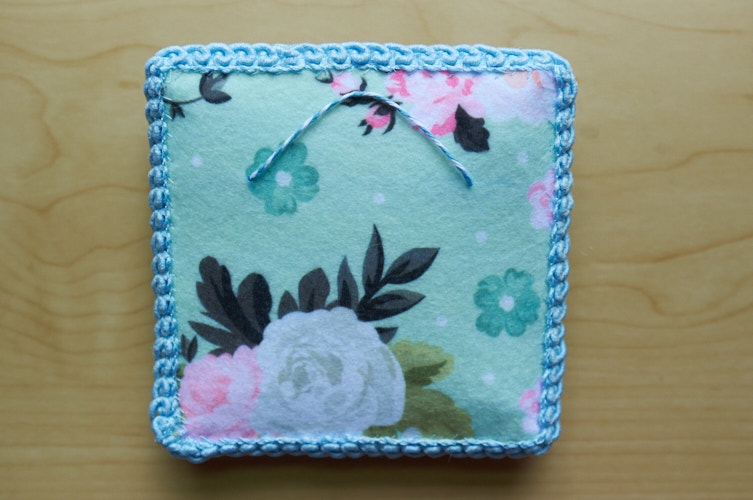
For the backing, I used foam board (this piece is 3.5″ x 3.5″, by the way), covered everything up with some felt you’ve seen ’round these parts before (and a bit of string for hanging), then tacked on some pretty blue trim to finish it off.
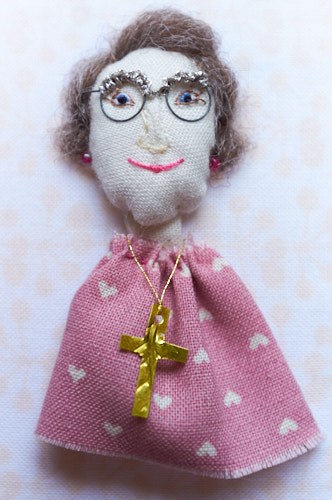
This project is easily done in only a few hours! I was really impressed by that. Go try it yourself! 😀

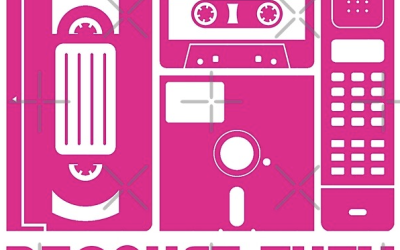
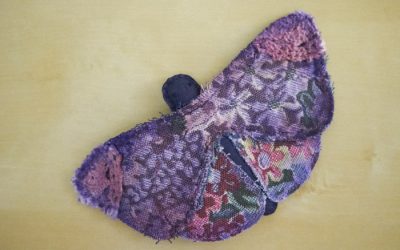
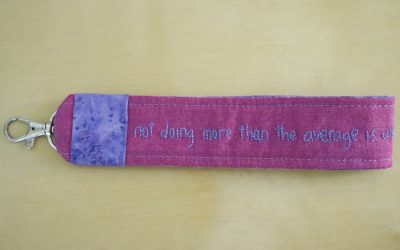
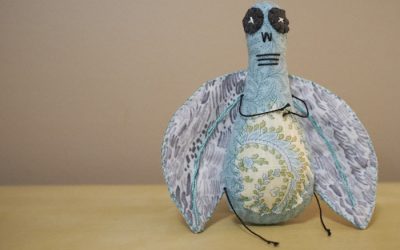
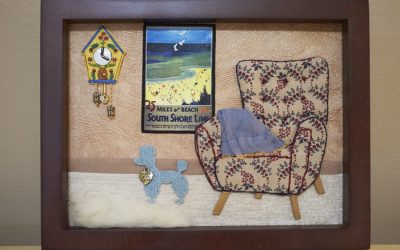
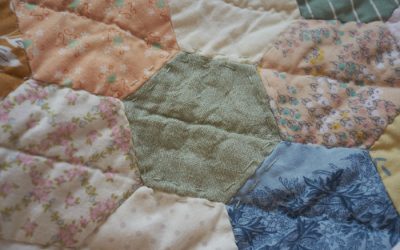
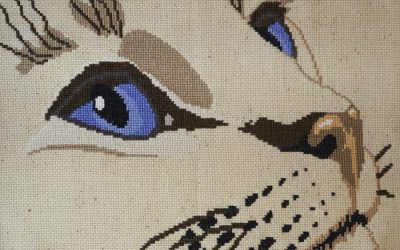
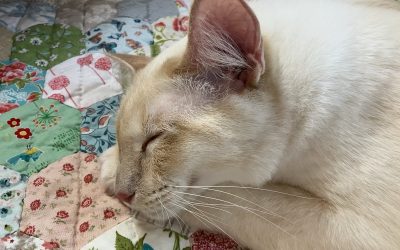
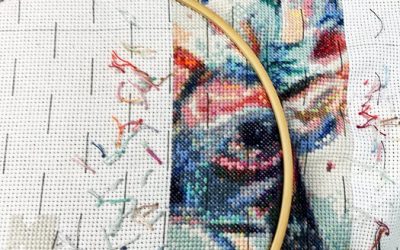
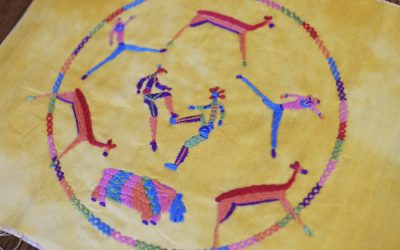
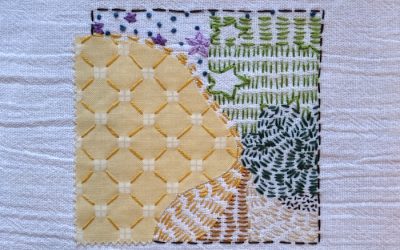
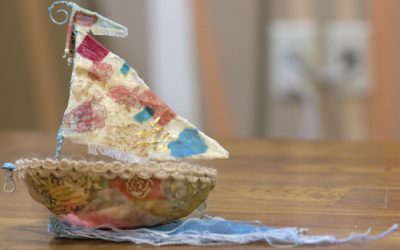
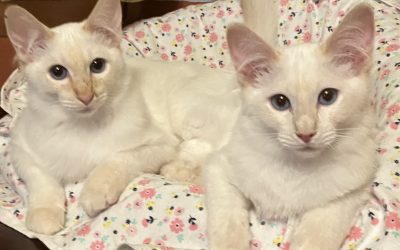
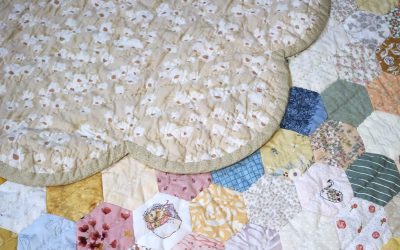
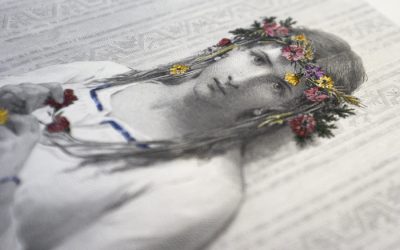
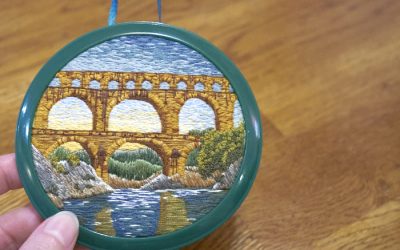
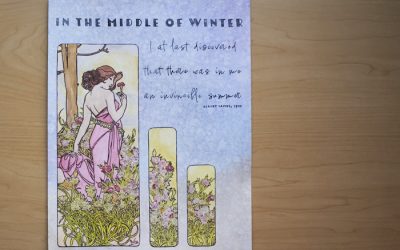
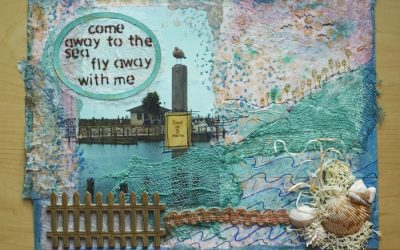
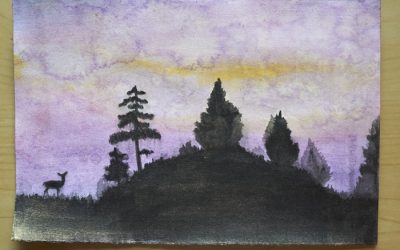

Hi CaLynn
I am very pleased to see your delightful stumpwork portrait of your great grandmother, and am glad you found the tutorial helpful. You have done a great job, especially the eyes and the glasses. At first I thought you had threaded beads on the wire before bending it into two circles. Salley Mavor makes such charming figures and has many neat tricks to dress and accessorise them.
I hope you will make many more portraits. Remember they don’t have to be of a person you know. Let the creativity flow.
Queenie, thank you so much! Your tutorial was so easy to follow, I really had a great time with this project. I do plan to make more portraits in the future:D
I used metallic thread for the glasses, which might be why they looked like beads, as it sat more upright than floss might – I also varied the direction of the buttonhole stitch, because the thread was curmudgeonly at that tiny scale. I think the glasses are why it reminded me of my great-gramma, because I had seen photos of her wearing fancy 60s glasses;)